Hi guys, so this has been a long time coming from me, it is a lengthy breakdown of all the various consoles released that we currently don't have on MiSTer and some musings about whether we could one day see cores for them. You may have seen a similar smaller post I did covering the viability of 5th Generation Consoles in the Atari Jaguar thread that people seemed to enjoy and it lead to some really positive discussions. Off the back of that I decided to cover all the generations, largely because I have a real interest in different consoles and this side of vide game history, but I also thought it would be a great place to have these fun discussions that pop up about what we would like to see, and what we could one day see, on MiSTer.
Hopefully it is a fun read for people who are interested in these discussions and old (often obscure) blocks of plastic, and who knows, maybe it will even inspire someone to check out, or take on make a core for, a system they had never heard of before.
Full disclaimer: I am not a developer, and if anyone has better info on the viability of these systems I would love to hear and can update this post. Since I started writing this a few months ago, then got sidetracked, many systems on the list have since released (mainly thanks to Rysha) so instead of deleting I have updated what I wrote before. This post is no doubt littered with typos, so any more egregious ones let me know. I will see about adding some images for the systems when I have some time to make this less of a block of text if it doesn't make it too cluttered. If I have missed any consoles then please let me know so I can update the list.
First Generation
The first generation of games consoles were essentially all pong clones, there were a lot of them and they were very similar. At some point I may flesh this section out to make it more comprehensive but in the meantime I will cover some of the more iconic ones. If there is one missing you think should be added let me know and I will do a wee write up for it.
Magnavox Odyssey
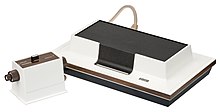
The first game console, and obviously desirable for historical purposes. The tech is basic, there are no chips on there. The cards you use don’t contain ROMS, they have codes which alters the pong game inside to make it into hockey, skiing etc. The games also game with translucent overlays that you would stick onto your TV to give you the boards to play one, and make them make sense. The controls are also very esoteric with a couple of spinners and a reset button on the controller. For such a technically basic system, I think this would require a fairly dedicated team to make it work. Creating overlays and getting the controls to work on a regular pad would be difficult enough. I do hope someone does decide to tackle this one day, but there is a lot more to getting this thing working well on MiSTer than meets the eye from looking at a technical spec.
https://en.wikipedia.org/wiki/Magnavox_Odyssey
Nintendo Color TV-Game

Nintendo’s first foray into the home console market wasn’t the Famicom but was back in 1977 with the Color TV-Game 6. A pong clone with 6 games built in it was a roaring success, selling over a million copies. It was followed up with the Color TV-Game 15 sporting 15 games, then later the Color TV-Game Racing 112 which boasted a steering wheel used in a top down racing game. Finally a Computer TV-Game was released, interesting for having an arcade perfect rendition of Nintendo’s Othello arcade board. In total these four machines sold over 3 million copies and were the best selling of the first generation consoles. Out of all the various pong clone machines these early Nintendo machines would be nice to see, partly for being Nintendo’s first home console releases, and with the later versions offering something more interesting with a racing game.
https://en.wikipedia.org/wiki/Color_TV-Game
Coleco Telstar Arcade

This post pong machine is the stuff of a madman’s dreams, shaped like a triangle with spinners on one side, a steering wheel on another and a revolver attached to the third. Possibly the trickiest part of preserving this one is the four released cartridges of three games each had a MOS Technology MPS-7600-00X chip on them, so the hardware is more on the carts than the console. That and getting the bizarre array of controllers to work well. This would be cool to see happen, but seems like a real labour of love for someone.
https://en.wikipedia.org/wiki/Coleco_Telstar_Arcade
Second Generation
RCA Studio II

An early post-pong console that was ultimately beaten by the Atari 2600 and fairly obscure now. It has a reasonable amount of games though, compared with other early systems. I would expect someone to pick this up in the near future, as the technical documents for it have been obtained, so the information (seems) to be out there to make this core. Kevtris previously did it for the NT Mini.
https://en.wikipedia.org/wiki/RCA_Studio_II
RCA Studio III
This is an obscure one that seems to have have had a very small release in the US, but was rebranded and sold under different names in Europe.
Luckily we have documents for it were obtained along with the ones for the Studio II. It’s possible whoever winds up doing the Studio II may do the Studio III as well, although this one is niche with limited software.
APF MP-1000

This is another second gen 8 bit machine but the only of the generation with a Motorola 6800 processor and an MC8647 video display generator, both of which we have already in other cores. Presumably similar enough to other cores we have so potentially low hanging fruit for someone. Has a library of around 25 games.
https://en.wikipedia.org/wiki/APF-MP1000
Bandai Super Vision 8000
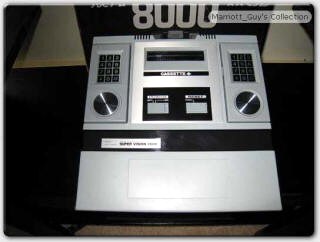
Bandai had a series of pong clones under the banner Bandai TV Jack consoles of which this was the final model in the line released in 1979. However, this final outing was not a pong clone but their company’s first attempt at a console that could play carts. Vast amounts of money were sunk into R&D for this machine, also known as the “TV Jack 8000”, but it was only ever able to release 7 game carts. Going up against the Epoch Cassette Vision and Atari 2600 the Super Vision 8000 failed spectacularly. Under the hood it has an 8-bit NEC D780C (Z80 clone) CPU, Ami S68047 (Motorola MC6847 clone) VDG and an AY-3-8910 for sound. Nothing too complex, so potentially if someone were inclined they could make a core for this. Hopefully someone does one day, but it doesn’t boast a strong library.
Update: Flandango has graced us with a Bandai Super Vision 8000 core
https://en.wikipedia.org/wiki/Bandai_Super_Vision_8000
VideoBrain Family Computer

Not the most exciting console/computer, with a small library, but it is now low hanging fruit as it shares the same processor as the Fairchild Channel F. I would be surprised if someone doesn’t pick this one up in the not-too-distant future. Kevtris did this one for the NT Mini (along with the Channel F).
https://en.wikipedia.org/wiki/VideoBrai ... y_Computer
Microvision

Now this is a real curio, and one that will hopefully get preserved, the first handheld console from Milton Bradley. There were 12 games released on cartridges and it was essentially a forerunner for the Game & Watch style games. Each cartridge had a Intel 8021/TI TMS1100 processor on there. Although a small library, and presumably quite tricky to make a core of despite being fairly basic this is one of the ore historically interesting systems from the era.
https://en.wikipedia.org/wiki/Microvision
Nintendo Game & Watch

Pierco has done some work on this already that he will hopefully come back to soon, so we may get this in the not too distant future. It is worth noting though, that there were different generations of G&W so the initial core may not play every title and need to have support expanded over time.
Update: The Game & Watch core from Pierco is now here! However at the time of writing it only supports the 18 games that use the SM-510 MCU chip. Over time this core will (hopefully) be expanded to other G&W chips (ATmega169PV: 1 game, SM511: 23 games, SM512: 4 games, SM5A: 15 games). Also the core could be made to support other LCD games from the era from the likes of Tiger, so this has the potential to turn into a much larger core and serve almost like how we have arcade games on the MiSTer, with more being added over time. A very exciting prospect for fans of LCD games and the preservation of these handhelds.
For more info there is a G&W thread here:
viewtopic.php?p=52923#p52923
https://en.wikipedia.org/wiki/Game_%26_Watch
The Legend Of Zelda Game Watch

Not to be confused with the Zelda G&W release, this curio was a Zelda LCD game on an actual watch. There are all sorts of weird LCD games out there, but I am including this because it’s Zelda, most people don’t know about it, and it is one I would really like to actually play. Hopefully the work for the G&W core would make other LCD games like this more easily doable, perhaps it could even be supported by the G&W core.
https://zelda.fandom.com/wiki/The_Legen ... Game_Watch
Epoch Cassette Vision
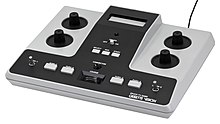
This is one that is oft overlooked, but before the Famicom came along the Epoch Cassette Vision was the biggest selling console in Japan. It uses a NEC uPD77xx CPU, and has a small library of only 12 games, and powerwise is comparable to Atari 2600 level. I have a feeling we may see this one in the not too distant future, although the successor the Super Cassette Vision had a more interesting library.
https://en.wikipedia.org/wiki/Cassette_Vision
Gakken Compact Vision TV Boy

When Cassette Vision was dominating the Japanese gaming market along came the Gakken Compact Vision TV Boy to try take a slice of the pie. Problem was it cost three times as much as the newly released revision the Cassette Vision Jnr. and Nintendo and Sega also wanted in on the action. The end result was catastrophic failure for Gakken and what we are left with is an incredibly rare console that looks like a cross between a telephone and a machine to edit VHS tape that only had six games released for it.
Little is known about this system, as like the Cassette Vision a lot of the hardware was on the carts, and as yet they have never been dumped and the system never emulated. However, also like Cassette Vision, all the carts and a console have been acquired and are to be dumped by Gaming Alexandria. Hopefully this system isn’t as much of a black box as the Cassette Vision has proved to be, as despite only having six games it would be great to see such an obscure machine preserved. If it winds up being simple we could see this on MiSTer at some point.
https://en.wikipedia.org/wiki/Gakken_Co ... ion_TV_Boy
Entex Select-A-Game
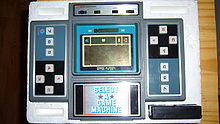
This is another early handheld, similar to the Microvision but released a few years later in 1981 and looking rather odd. It only had 6 games on it, utilising static overlays, and is certainly not the most exciting system. I wouldn’t hold my breath for this one, unless it becomes low hanging fruit off the back of another core like the Microvision.
https://en.wikipedia.org/wiki/Entex_Select-A-Game
VTech CreatiVision
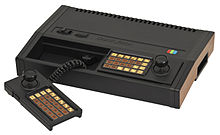
The CreatiVision, also known as the “Dick Smith Wizzard” in Australia and New Zealand, is a console-cum-computer from the era of the Coleco Adam and Intellivision. There were 18 games, so not a huge library, but it may be fairly similar to other consoles and computers from that era. It sports a Rockwell 6502 CPU, TMS 9918/9929 graphics chip, and TI SN76489 sound chip. This feels like a project that someone more interested in old 8-bit computers may be interested in, and with a lot of people interested in building PC cores of that era I think this one could wind up happening. Also, who wouldn’t want to be the dev to bring the “Dick Smith Wizzard” to MiSTer?
Update: Rysha has released a feature rich core for the Dick Smith Wizard including support for the Laser 2001 computer
More info: viewtopic.php?t=2334
https://en.wikipedia.org/wiki/VTech_CreatiVision
Entex Adventure Vision

This is an obscure Vectrex style system, with only four games released, but is an interesting curiosity. Kevtris made a core for this on the NT Mini, and another core not on MiSTer seems to be out there, but nobody has picked up this one yet. I previously made a forum thread about this one with some more info on there for anyone interested in this one. I’m hopeful someone will pick up this one for MiSTer at some point in the future, it would be nice to see it preserved.
viewtopic.php?f=24&t=343&p=8834&hilit=a ... eb65#p8834
Update: Thanks to Rysha we now have this core, it’s surprisingly fun so give it a go!
https://en.wikipedia.org/wiki/Entex_Adventure_Vision
Tomy Tutor

So this was a child focussed computer-cum-console, with around 27 games released. I am actually surprised this isn’t on MiSTer already as It was architecturally similar, but not identical, to the Texas Instruments TI-99/4A, and used a similar Texas Instruments 16-bit CPU. This feels like someone one of the 8-bit computer focussed devs would pick up as low hanging fruit, or add support into the TI-99 core. It almost feels like an omission at this point, so I reckon support for this will pop up in the not too distant future.
Update: We now have a released in Main thanks to Flandango! Read more here:
viewtopic.php?p=48219#p48219
https://en.wikipedia.org/wiki/Tomy_Tutor
Third Generation
Casio PV-1000

A failed Z80 based console from Casio. It only got 13 games released for it before being discontinued, and is now as rare as hens teeth, although fortunately all the games have been dumped. Although a seemingly simple system, made of chips we already have cores for, it does use a NEC D65010G031 for sound which we don’t have a core for yet. This is such an obscure one it would be nice to see it preserved and try out the library, but it would likely be a decent amount of work for someone.
Update: We now have a core from Flandango! Read more here:
viewtopic.php?p=57689#p57689
https://en.wikipedia.org/wiki/PV-1000
Casio PV-2000

Confusingly enough in addition to the PV-1000, there was a PV-2000 system that was more like a crude computer that could play game cartridges, but not the same cartridges as the PV-1000, although some games seem to be on both. This is another obscure one an 8-bit PC dev may want to look into, it is close to an MSX1 and uses a variant of the Z80
Update: We now also have a PV-2000 core in Main from Flandango! More info here:
https://www.old-computers.com/museum/co ... asp?c=1167
Nichibutsu My Vision

Now here is an obscure one from 1983, My Vision from Nichibutsu. An early entry into the home console market in Japan this system had an odd design with the buttons on the console and a speaker mounted under the system. Two player was only supported if you happened to have a pal who had one of these as well and a link cable to connect both together. Only about 7 games were released for it, all Japanese board/table games like Majong and Go. Although this is a machine with a rather uninteresting library it is a very simple machine made of parts we already have, so expect this one in the not too distant future.
Update: Flandango has released his Nichibutsu My Vision core
http://videogamekraken.com/my-vision-by-nichibutsu
Epoch Game Pocket Computer
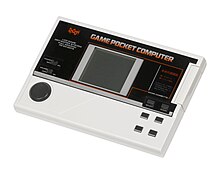
An early handheld from Epoch released in 1984, that only saw 5 games released and as a commercial failure. This is another rare one, but is so obscure and sports a NEC uPD78c06 CPU we currently don’t have. Would be nice to see preserved, and if someone takes on the NEC uPD78c06 which is also used in the Super Cassette Vision and Game Master handheld then this becomes real low hanging fruit for someone. Despite its shortcoming I think there is a good chance we may see this on MiSTer at some point.
https://en.wikipedia.org/wiki/Epoch_Gam ... t_Computer
Philips Videopac+ G7400

The G7400 was the 1983 follow up to the G7000 (AKA the Magnavox Odyssey² in the USA) and released in limited quantities in Europe. It was planned to be released as the Odyssey³ Command Center in North America, but this release never happened. The system was fully backwards compatible with the previous C7000 library, boasted a couple of unique games and also was able to play previously released games that were rereleased with higher resolution sprites and backgrounds. It would be nice to see the current Odyssey² / G7000 core be developed further to be able to support the G7400 library with better graphics.
https://en.wikipedia.org/wiki/Philips_Videopac%2B_G7400
Super Cassette Vision
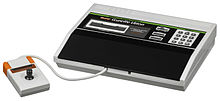
The successor to the Cassette Vision that went up against the Famicom and PV-1000, and came out slightly better than the PV-1000. Now this is a more interesting system than some of the others on the list, as it actually had a respectable library of 30 games and even managed to secure exclusives of licensed games such as Doraemon, Lupin III and Dragon Ball. These games have all recently been dumped, so here’s hoping someone decided to look into doing this one. It does feature chips we do not have cores for yet, sadly. That being said, this is definitely one of the more interesting systems from the era we don’t have yet so fingers crossed.
https://en.wikipedia.org/wiki/Super_Cassette_Vision
Super Micro
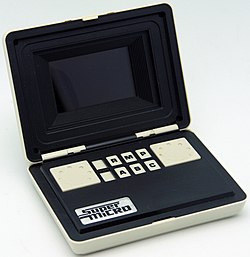
Also known as the Palmtex Portable Videogame System (PVS), was another failed early handheld, this one only got 3 games released before it died a death. Another super obscure one with a very small library that would be nice to see preserved, but I am not holding my breath it will ever happen.
https://en.wikipedia.org/wiki/Palmtex_P ... ame_System
RDI Halcyon
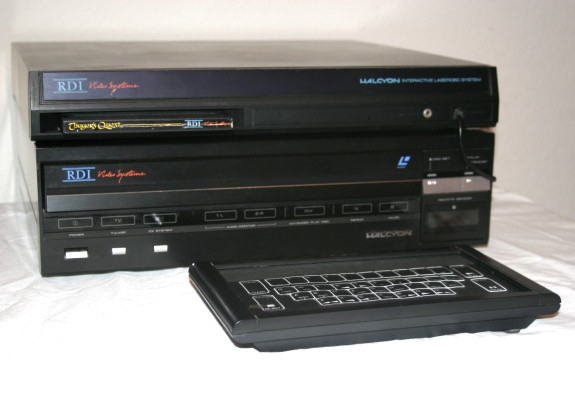
In a list of impossibly obscure consoles this one really is the stuff of legend. The unreleased Laserdisc based RDI Halcyon. Planned for release in 1985, fewer than a dozen units are known to exist and only two games were completed. This thing is so impossibly rare, combined with the fact that Laserdisc games are very difficult to dump, the only way we would ever see this is if there was a much wider preservation project of this system and all the groundwork was done so it could be ported over. Currently there are no emulators and (as far as I am aware) no viable dumps, so I really don’t think we will ever see this one.
https://en.wikipedia.org/wiki/Halcyon_(console)
LJN Video Art
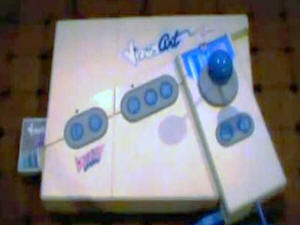
Another early entry into the strange world of educational consoles. Released in 1987 and sporting only 9 games, including some Disney, Marvel and Looney Tunes in there, it flopped hard and was quickly discounted and discontinued (a running theme in this list). I haven’t seen the specs for this one, but I don’t see any developers jumping to preserve old, failed, educational systems. That being said Team Europe have been doing a lot of preservation work of educational systems, which is a final frontier for undumped games and systems, so never say never. Maybe some cruel parent will decide to make cores for some of these educational systems and torture their kids with them.
https://en.wikipedia.org/wiki/LJN_Video_Art
Action Max

This was an odd little system, where you needed a VCR to play a video and you used a lightgun to shoot at targets in said video. It was an interesting idea at the time, but gameplay isn’t exactly the best and obviously very repetitive. If you have a system you can play rips of the videos on a DVD player etc. and someone has captured the VHS tapes years back. Will we see this one on MiSTer? Well it requires the ability to play video files, but it’s certainly doable and there have been murmurs about it before, so I am optimistic we may actually see this one sometime in the future with virtual lightgun support - especially if the current work to play the Laserdisc video from the Dragon’s Lair arcade is fruitful.
https://en.wikipedia.org/wiki/Action_Max
VTech Socrates

Another educational console from 1988, this one with a full keyboard and a Z80A CPU. This one also failed with only 9 titles released. There seems to be a small community around this one and it has made it into Mame. Possibly more like an 8-bit PC than a console under the hood, maybe an 8-bit dev will look at it one day.
https://en.wikipedia.org/wiki/VTech_Socrates
BBC Bridge Companion

In a list littered with pretty dud systems with dull libraries this one is top contender for worst games console of all time. The BBC Bridge Companion was released in the UK in 1985, costing more than a NES and many home computers, it had 9 carts released for it. All the carts were different tutorials to play Bridge. That is all it does, teaches you to play Bridge. Hardware wise it has a Z80A CPU, a TI TMS9129NL graphics chip and no sound. More of a meme than a console, it has made its way into Mame and someone ported Space Invaders to it. As bad as it is, it is also a really basic machine. If someone was looking for a first FPGA core to tackle this should be very simple, and the schematics could be got as the company that make the Multisystem also made this coincidentally. I think there is an outside chance this may pop up one day.
Update: Jimmy Stones has graced us with a core for this, so now you too can learn to play Bridge like it was 1985!
https://en.wikipedia.org/wiki/BBC_Bridge_Companion
Fourth Generation:
View-Master Interactive Vision

Another VHS system, this one educational, with 7 games: 4 Sesame Street, 2 Muppets, 1 Disney. This is an odd one, as although it is an interactive VHS system you also play 8 bit era arcade style games as well. If Action Max happens then this may become low hanging fruit for someone, but it is niche with a small library.
https://en.wikipedia.org/wiki/View-Mast ... ive_Vision
Gamate

A Cheapo Asian handheld from 1990 (this one is on the NT Mini). This one has a respctably sized library of over 70 games, although they are largely knock offs of early Gameboy game. It is a simple system and could be done by a dev within a few days/weeks, and the only emulator that can play them currently is MESS. It would be nice to see this one preserved.
Update: Thanks to Rysha we now have this, and guess what… it’s not terrible! This one actually has a pretty fun selection of games, a cut above the likes of the Supervision and Mega Duck. Well worth exploring the library of this one.
https://en.wikipedia.org/wiki/Gamate
Hartung Game Master
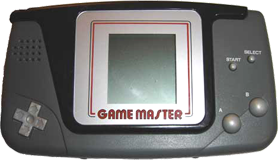
Another cheapo Asian handheld from 1990 with a library of 19 games (this one is not on the NT Mini). The library for this one isn’t great, but missing chip is also used by the Super Cassette Vision so if this is done then it would be very quick for someone to create a core for this system, so there is a good chance we will see it one day.
https://en.wikipedia.org/wiki/Game_Master_(console)
Amstrad GX4000

This was a failed British console from 1990, that UK gamers are likely familiar with but is very obscure outside of British car boot sales. That being said it is getting hard to find these and they are getting expensive. It is another Z80 based system, with a library of around 30 games, and novel for the era is it has RGB scart out. I am surprised no UK devs have looked at this one, I wonder if it could potentially have support added to Amstrad CPC core. It would be interesting to hear a dev who knows the system weigh in on this one.
https://en.wikipedia.org/wiki/Amstrad_GX4000
Konix Multisystem
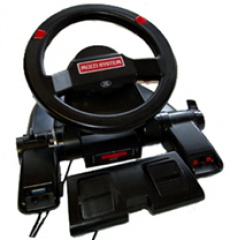
This 16 bit British console was planned for release in 1989, with several games working on it, but the system was cancelled. So why is this unreleased system on this list? Because bizarrely a core is being worked on by Lee Hammerton and could likely see release in the not too distant future. It’s rather incredible that even unreleased systems are making their way to MiSTer.
Update: the absolute Mad Lad went and did it and we now have WIP core for the Konix Multisystem! Hopefully it is completed and makes its way into Main, until then you can try it out and learn more here:
viewtopic.php?t=4717&sid=c4ada999d1a852 ... cd1bbc1ee6
https://en.wikipedia.org/wiki/Konix_Multisystem
Commodore CDTV

The CDTV was essentially a consolised version of the Amiga 500 with a CD drive. There isn’t much that is on CD that isn’t available for the Amiga 500, but it would be nice to be able to load CD games and use the core more like a console. As far as I understand it, if someone adds in CD read and Red Book Audio and CD read support to the Amiga core then this should be supported, or close to it. There has been some interest in adding support for this and Amiga CD-32 recently, and some headway made, so hopefully it is a successful endeavour as it would be nice to be able to play these discs.
https://en.wikipedia.org/wiki/Commodore_CDTV
Neo Geo CD

The CD version of the Neo Geo, which boasts in some cases better audio than the cartridge counterpart, a few extra perks in games here and there, and eight exclusive titles.
Furrtek did quite a bit of work on this previously, and there is even code for it in the Neo Geo core, but he hit issues and hasn't come back to it since. Hopefully he does one day, but he spends a lot of his time decapping and tracing out chips which is very useful to the wider community.
Update: PaulNB (and Sorg) have fully implemented NGCD into the Neo Geo core!
https://en.wikipedia.org/wiki/Neo_Geo_CD
Philips CDi

Philips’s oft maligned multimedia entertainment system, with over 200 games released, although none anyone holds any great reverence for. It is best known these days for the incredibly ropey Zelda and Mario games that Nintendo allowed their licences to be used. This is another system that was once pretty cheap and easy to get but has rockered in price in recent years. Sadly this one would be a very large undertaking for someone, so would need to be a passion project for an experienced dev who is willing to dedicate potentially over a year into, so I am not holding my breath. I also don't think it shares much with other consoles, however Ash was looking at it so his work may help pave the way for a core one day (like he has done for Jaguar).
https://en.wikipedia.org/wiki/CD-i
Tandy Memorex VIS

A system from Tandy similar to the CDTV and CDi that I am guessing most people reading have never heard of. It is more a computer in a set-top box than a console, with a library of twenty mostly educational games, and a lot of multimedia discs. I don't think it shares too many parts with other things. Maybe a dev who likes doing computer cores may be interested one day, but again I really would not hold my breath on this one ever happening.
https://en.wikipedia.org/wiki/Tandy_Vid ... ion_System
Watara Supervision

Yet another cheapo Asian handheld, this one from 1992 and boasting 65 games. This one is on the NT Mini, and there is actually a playable alpha MiSTer core of it from Pierco, that runs pretty well. It wouldn't take much to get this core cleaned up and released so hopefully it happens in the not too distant future.
Update: Thanks again to Rysha we can now experience the thoroughly sub-par library of the Supervision.
https://en.wikipedia.org/wiki/Watara_Supervision
Mega Duck

More of a meme than a console, the Mega Duck (also amusingly known as the Cougar Boy) is yet another cheapo Asian handheld. Released in 1993, this one has 30 odd games and was released on the NT Mini Noir. If we are lucky maybe we will get this one for April Fools, if only to stop people memeing about it in the discord. I suspect someone will make this core at some point, and like the other ropey Asian handhelds it would take a matter of days/weeks to do.
Update: yet again thanks to Rysha it is possible to play this meme of a system, as support has been added into the Gameboy core as it turns out they ripped off the Gameboy so much it was trivial to add support to the existing core. Ah lazy Mega Duck, the meme that keeps on giving.
https://en.wikipedia.org/wiki/Mega_Duck
Pioneer Laseractive

This is a really big question mark. Laserdisc games in general really do need to be preserved, but what it would take to get a Laserdisc games system running on FPGA and how games would be preserved and loaded I just don't know, and sadly I don't think any dev has really dug into it either.
https://en.wikipedia.org/wiki/LaserActive
YENO PC-Logomax 2
There is a whole weird world out there of super obscure educational systems. This is a German system from 1992 from YENO that had only three known carts and 6 “games” in total, all German centric. It is a basic machine, but has only recently had the carts dumped and the TMS50C44N2S chip on it needs a decap. It will presumably make its way to Mame at some point and if someone were inclined could be preserved on MiSTer. I don’t know who would want to do this, but it would be possible. Good effort to Team Europe for actually going to the effort of preserving obscure systems like this.
https://team-europe.blogspot.com/2022/0 ... carts.html
Sega Pico
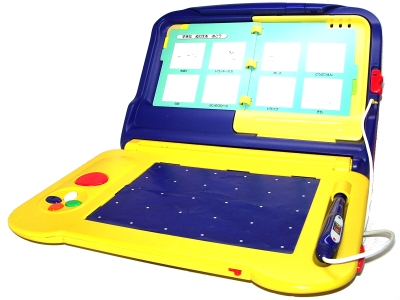
Sega’s 1994 venture into “edutainment” was the Pico, a child’s console that looked like a toy laptop with a touch pad, that plugged into your TV, taking oversized carts that had corresponding book you read along with while you played and/or learned. A rather bizarre offering, but a novel one (pun intended). They managed to utilise their own IP like Sonic, as well as many Disney characters, and it even boasts the only Pokemon games released on a non-nintendo console. The hardware is very similar to the Megadrive. ShaneLynch did a sizable amount of work developing a core for this, however has not had the time to complete it. Hopefully he is able to come back to it at some point so we can all do some Sega themed home schooling.
https://en.wikipedia.org/wiki/Sega_Pico
Fifth Generation:
Sega 32X

The bizarre mushroom tumour that sits ashamedly on top of the Mega Drive. One of the most misguided console releases from a major manufacturer, but it does boast some interesting games in it’s small library of 40 games. Assuming that Saturn is doable (which is looking likely) and it will all fit on the DE-10 Nano, then 32X feels inevitable, as a lot of the groundwork is done in creating the Saturn core. Hopefully srg320 already plans to move on to it next after the Saturn and improving the Mega Drive core. I am cautiously optimistic we will see this core.
https://en.wikipedia.org/wiki/32X
Update: from behind enemy lines in Russian occupied Ukraine, SRG320 (the real life Ghost of Kiev?) was able to upload a core for this system which has now been released. It is nothing short of incredible we have this, what a genuinely legend for doing this.
Sega 32XCD

If you have an actual Sega Tower Of Power (Mega Drive + 32X + Mega CD) then you have the ability to play the 6 32X CD games. Coming on disc, these were essentially Mega CD games that made use of the 32X hardware as well for improved graphics and gameplay, so get excited for the definitive 90s release of Night Trap. In order to get these games to run on Mister it would require the Mega Drive core to be reworked in order to contain both the Mega CD and Mega Drive core, and then also 32X hardware. I don’t know if it would be possible for them to all fit in one core, and it would be a lot of work for 6 pretty lacklustre games, but never say never, srg320 has quietly done what seems impossible.
http://www.poprewind.com/6-sega-cd-32x- ... they-made/
Sega Saturn
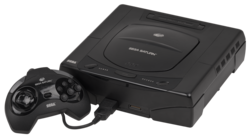
Sega’s follow up to the… 32x I guess. A powerhouse of a system that boats a library of over 1000 games (although for better or worse ¾ of them are Japanese exclusives). Most people reading this will already be well aware, but srg320 has been quietly working on this core for a good while now and although it is still very much WIP, great progress has been made and some games are playable. It is still not for certain it will fully run without issue on the DE-10 Nano, but with this level of progress and srg320’s track record, we have a real chance of a top tier Saturn core coming in the future. You can grab test builds in the MiSTer discord if you are feeling adventurous, but dual ram sticks seems to have the better stability.
https://en.wikipedia.org/wiki/Sega_Saturn
FM Towns Marty

Very rare outside of Japan was Fujitso’s consolised version of it’s FM Towns computer system, the FM Towns Marty. Released in 1993 it boasts nearly 600 games, although the system is very Japan centric and many games not English friendly, there are a lot of gems on there. Puu san, who has done the initial cores of the Japanese computers x68000, PC-88 and PC-98 is currently working on an FM Towns core, which is essentially the computer version of the FM Towns Marty. Assuming he pulls it off, then some of the western devs here take what he has done and get it running well on the MiSTer, then adding support for FM Towns games should be very doable into the core, possibly even trivial as an FM Towns computer can play FM Towns Marty discs. However, I would not expect to be playing FM Towns Marty games on an official MiSTer core for a couple of years.
https://en.wikipedia.org/wiki/FM_Towns_Marty
Amiga CD32

In 1993 Commodore released another consolised Amiga with a CD rom drive, this time the CD32 with very similar hardware to the Amiga 1200. There were around 150 games released, but pretty much all available on the Amiga 1200. Like with the CDTV, if someone adds in CD read, Red Book Audio, and also an additional Akiko chip, then the Amiga core will be able to support CD32. There is a desire from some developers to implement the Akiko chip and get this working and the groundwork is under way, hopefully they can pull it off. As with CDTV it would be great to consolise the core and be able to load CD32 games.
https://en.wikipedia.org/wiki/Amiga_CD32
3DO Interactive Multiplayer

The 3DO, not an abstract failure, not a roaring success, the CD era console that just was. Released in 1993, and sporting a healthy 263 game library, there is a lot on the 3DO. A lot are early FMV games making use of the CD medium, Plumbers Don’t Wear Ties being the most infamous. There are some good games in there and it does boast possibly the best released version of Wolfenstein. The problem is this system is complex, and almost on par with the PS1 in terms of complexity. It would take a top tier dev a lot of work to do this one. Robert has stated he is not interested in working on the 3DO, so don’t expect this to come after PS1. There is some hope that early work is being done, and there is the potential that the developer behind the 3DO emulator and the upcoming ODE could be interested in making a core. It would be a nice system to get for sure, but it’s certainly not written in stone we will get this one, and if we do it could be a good number of years away.
https://en.wikipedia.org/wiki/3DO_Inter ... ultiplayer
Atari Jaguar

Atari’s cartridge based system from 1993 didn’t exactly set the world on fire, but it was a powerful system for the time and did get 50 cartridges released for it with some interesting exclusives. Possibly more interesting is the strong homebrew scene around the Jaguar even to this day. This is one I am excited about, as although there had been an early WIP core from Ash sitting on GitHub for years, Rysha has been quietly cleaning it up and updating it. There is now a WIP core using the Atari netlists with full hardware implementation. It is still WIP, and does require dual ram to run, but we will hopefully see it come together throughout 2022. It would be fantastic to have this core fully working and in Main. Get on the hype train.
https://en.wikipedia.org/wiki/Atari_Jaguar
Atari Jaguar CD

Similar to the Sega/Mega CD, the Jaguar got a CD add-on, and it managed to make the Mega CD look like a success story. The official library consisted of 13 games, but again more interesting is the homebrew scene around the Jag CD which make this much more interesting. The actual hardware of the Jaguar CD doesn’t seem to be too advanced, it is more a CD reader than a separate console - which the Mega CD is. The hardware is also notoriously prone to failure now and incredibly expensive, so this would be great to see preserved if only for that reason. However, it does contain a chip called Butch and this has never been emulated before. Hopefully after the Jaguar core is completed people will be able to get their head around the Jaguar CD and this Butch chip, perhaps a decap is needed for this. I am keeping positive about this one coming to MiSTer one day, but there is groundwork to be done.
https://en.wikipedia.org/wiki/Atari_Jaguar_CD
Bandai Playdia

This was a CD system released in 1994, aimed at younger kids in Japan and was more a glorified VCD player than anything else. There were 38 discs released, many anime focussed and edutainment titles, nothing terribly exciting, especially for a non Japanese speaker. I suspect it would be a lot of work to get a core for it, CD systems are complex, and I can't see anyone wanting to spend the time doing it - unless it shares chips with something else which I don't think it does. Maybe one day, but I would not hold my breath for this one.
https://en.wikipedia.org/wiki/Playdia
NEC PC-FX

NEC’s follow up to the iconic PC Engine was less impactful, to say the least. Launching in 1994, the library consists of 62 titles released on CD. Any PC Engine hoping for more shooters will be disappointed, as the hardware is more focussed on FMVs with lots of text heavy non English friendly games. This is one CD system I am much more hopeful for coming to MiSTer and I would take good odds on this being on MiSTer within the next couple of years. Virtual Boy would pave the way for it, and although it will not be trivial to do, and the library is very Japanese FMV centric, there are interesting things in there (it's not just hentai games, which is a lazy and unfair assessment). I know David has an interest in the system, and in terms of localisations it is a near untapped mine of games that hopefully we will see more from in the future. A betting man would put a few quid on this being one 5th gen core we do get in the next couple of years.
https://en.wikipedia.org/wiki/PC-FX
Virtual Boy

Nintendo’s bizarre 3D headset console from 1995. There were 22 games released, and being Nintendo there are some gems in there, including a Wario platformer. Robert has mentioned he could be interested in doing a 2D version of this core, which personally I think would be great, so hopefully he decides to look at it in the future after PS1. As mentioned one chip is also used by the PC-FX, so would be a stepping stone to that. Hopefully he considers this one after PS1 is in good shape, but that will be a long way off yet. Fingers crossed for this in 2023.
https://en.wikipedia.org/wiki/Virtual_Boy
Tiger R-Zone
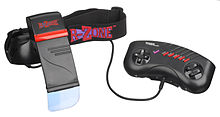
This is a rather odd handheld that you had a screen in a visor, released in 1995 by Tiger. Around 30 games were released for it, although I am not sure they are all dumped. I don't think it is terribly complex, but I also don't know if it shares chips with anything else and nobody has expressed any interest in it, so I wouldn't hold your breath on this one.
https://en.wikipedia.org/wiki/R-Zone
Super A'can

Here is a real curio. A Taiwanese system from 1995 that is impossibly hard and ridiculously expensive to get these days, that is sort of a bastard child between the SNES and Mega Drive, but only got 12 (not very good) games. It has been said that to make a core for this would require as much effort as making the SNES core. I know that Kevtris has said he has three of them and it is the system he would most like to make a core for if he had the time, although that doesn't help the MiSTer community much. That being said, someone has sent the chips to Furrtek who has decapped them, so someone out there is possibly interested in this system. Maybe someone in touch with Furtek could ask him who sent the chips and what for (maybe it is for Mame). This system has a big question mark against it, but I am not expecting it any time soon if at all.
Update: Furrtek has announced that he is actually taking on this one as his next project, godspeed!
https://www.patreon.com/posts/tmnt-mister-core-82176194
https://en.wikipedia.org/wiki/Super_A%27Can
Casio Loopy
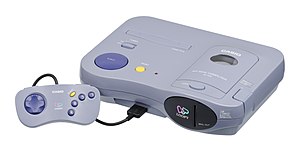
The Japanese cartridge based system from 1995 with only 10 games released, all targeted at Japanese school girls, and had a built in sticker printer. Such a bizarre system and ultimate failure. The main selling point was the ability to print out lots of stickers of images from the games. I don't see anyone stepping up to take this one on, especially as I think it has unique chips so would be a lot of work.
https://en.wikipedia.org/wiki/Casio_Loopy
Nintendo 64
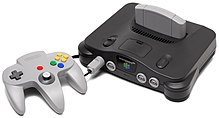
No need for an introduction for this one, we all know what it is and virtually all of us want it. Sadly this isn't doable on the DE-10 nano. We all wish it was but it just isn't. We will have to wait until there is a more powerful successor to the DE-10 Nano to play the near 400 game strong library. Maybe there will be an FPGA core on something in 5-10 years, but it won’t be on the DE-10 Nano.
Update: well a lot of us will be eating out hats with this one, but Robert has announced this as his follow up to the Playstation 1 core, and is making good progress. True FPGA wizardry at work here...
https://www.patreon.com/FPGAzumSpass
https://en.wikipedia.org/wiki/Nintendo_64
Nintendo 64DD
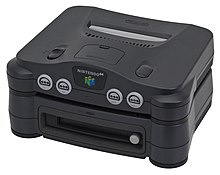
Well I didn’t think I would need to add this one to the list, but with Robert making serious progress on the N64 core it is worth speculating about. This was a rare colossal misstep for the Big “N”, even making the Virtual Boy seem a sensible venture by comparison. The 64DD was an expansion disc drive for the N64, which was meant to add additional games and add-ons for existing games on cheaper to produce discs. And it has an RTC. And it could go on the internet. And it only came out in Japan, in limited amounts, had around ten titles and was dead on arrival. This system bordered on vapourware there was so much hype, and so little was delivered.
That being said, a lot of us N64 fans have pined for one of these for over two decades, and I for one still feel a desire to actually explore the small library and muse over what could have been, but simply can’t justify the four figure amount it costs now to get one of these. Thankfully if (and this is still a big “if” at this point) Robert manages to pull off his N64 core then there actually isn’t much under the hood in the DD, as most of it is to support going online which is moot these days as the functionality doesn’t work anymore. To add in support we would need disc reading and writing, bios support, RTC support and mouse support. This should actually a lot more straightforward to add than CD support to a core, as timing issues shouldn’t be as critical. The one issue is likely space within the core for additional features, but it could be possible to have a sister 64DD core stripping out unneeded features to make room for what is to run 64DD games. It’s not in the realms of madness we may actually get a 64DD core in the not too distant future…
https://en.wikipedia.org/wiki/64DD
Apple Pippin
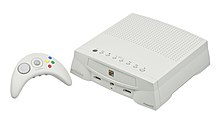
Another console that is more meme than machine these days. In 1997 Bandai and Apple released a console, that was essentially a consolised Apple Mac. A powerful machine it was, but to say it failed is an understatement and only a handful of games were released for it, and they didn’t play terribly well. The only way I could see this happening is if someone does a 90s Apple computer core and it's possible to add support to run the Pippin, as Macs from that era reportedly can play Pippin discs. So maybe if we get a Mac core it opens the door for Pippin support, but I wouldn’t hold my breath.
https://en.wikipedia.org/wiki/Apple_Pippin
Tiger Game.com

Yet another Asian handheld, this one from 1997 and in fairness Tiger went to the effort of licensing Jurassic Park, Batman & Robin, Sonic Jam and Resident Evil, but only 20 games were actually released. It has a Sharp SM8521 CPU, and despite being released in 1997 graphics are black and white. Kevtris hasn't done this one, and it has a CPU we don’t have, so it is quite complex. Curiously someone has made cheats for this system, so it must have at least one fan. I am hopeful we will see this one day.
https://en.wikipedia.org/wiki/Game.com
Neo Geo Pocket Color
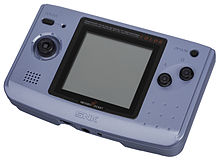
In 1999 Neo Geo released a handheld platform, with 82 games going on to be released on it, featuring a lot of nice ports of Neo geo staples like Metal Slug, and even a Sonic game.
Jotego is currently working on an unofficial core, but he is making slow progress on it. And who knows when it will be available to non patrons, probably not this year anyway. Personally I really dislike the idea of there being unofficial console cores and I hope someone just takes the code and makes their own official core of it once the code is released.
https://en.wikipedia.org/wiki/Neo_Geo_Pocket_Color
Sixth Generation:
The PS2, Game Cube, Xbox, Dreamcast, Nuon and Tapwave Zodiac have all been stated to be beyond the capabilities of the DE-10 Nano. There are however some small systems from this era that could potentially make their way to MiSTer.
Sega Dreamcast VMU
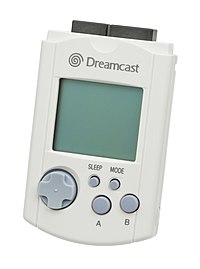
Although the Dreamcast is way out of scope for the DE-10 Nano, the memory card it used was a mini handheld console in it’s own right and is certainly within the scope of the MiSTer project. There are certain games that can be played on it, and there is a reasonable homebrew scene. Someone actually recreated a VMU to run on an FPGA as part of the University course, and the person did appear in the discord awhile back for one day excited about porting it to MiSTer. Sadly they never returned and went quiet. Hopefully they do some back at some point as it would be a fun little core to have, or someone picks it up as a relatively small project.
https://en.wikipedia.org/wiki/VMU
Sony PockStation

The VMU is fairly well known in the west, but less well known is Sony’s equivalent memory-card-cum-console for the PS1, the PocketStation. Released six months after the VMU in Japan in 1999, and never released outside of Japan, the PocketStation offered extra features and mini games for many Japanese versions of games, and strangely cold also interact with a Bandai Wonderswan. As you would expect there is a homebrew scene around the PocketStation as well. A fairly simple system, this is certainly possible on MiSTer and it would be fun to be able to use saves from the PS1 core with it as a separate core. Sadly Robert doesn’t seem interested in this one, but hopefully someone decides to look into it as it would be a nice one to have.
https://en.wikipedia.org/wiki/PocketStation
Nintendo Pokemon Mini

Probably the cutest console on this list, is 2001’s Nintendo micro handheld the Pokemon Mini, the smallest console able to take carts. All 10 games released for it were Pokemon themed mini games. Interestingly, despite the games being basic with a small black and white screen there was a lot built into the system. There is a reed switch to detect motion, rumble feedback and IR receiver to play Multiplayer against someone else with a system. This system would certainly be doable, although you would need to map shaking to a button press. There is a pretty hartdcore community around this one, it has been emulated and there are even flash carts to run homebrew games. The CPU is a Seiko S1C88, which doesn’t have a core made but the schematics are readily available. This would be a fun little system to see on MiSTer, hopefully someone picks it up.
Update: Grieverheart has released a core for this system!
Read more here: viewtopic.php?t=5326
https://en.wikipedia.org/wiki/Pok%C3%A9mon_Mini
GameKing

You would have thought dodgy Asian gameboy knockoffs would have been a thing of the past by 2003, but clearly nobody told Timetop who released the GameKing. Trying to pass itself off as a GBA, GameKing went through three different hardware revisions (the third finally adding colour). Across the three versions just shy of 50 games were released, most being clones of NES, Atari 2600 and Gameboy titles. Under the hood it has 65C02, which we don’t currently have a core for. This system was done for the NT Mini, so is very doable, but would require someone to implement the CPU. Hopefully we see this one in the not too distant future, to help round off MiSTer’s support of dodgy Asian handhelds.
https://en.wikipedia.org/wiki/GameKing
Nokia N-Gage

In 2003 Nokia tried to take on the GBA with a phone shaped like a handheld console. It was a nice idea but it was a commercial failure. Mobile phone and games from the early 2000s is an oft ignored area of preservation, so if there was to be one system to bring to MiSTer to be able to explore phone games from this era this would be a good one to pick. It has an ARM920T CPU which would need a core, but this would be doable on the DE-10 Nano. It would certainly be an interesting addition to the project if someone were to pick it up.
https://en.wikipedia.org/wiki/N-Gage_(device)
GP32

The GP32 is a fairly obscure South Korean handheld from 2001, for which 28 games were released. It has a Samsung S3C2400X01 ARM CPU, and would be doable for MiSTer if someone were inclined. It would certainly be nice to experience the library, but it is very niche and would require a fair amount of work to get it working on MiSTer.
https://en.wikipedia.org/wiki/GP32
VTech V.Smile
Masters of the educational systems VTech released the cartridge taking system the V.Smile in 2004. Aimed at young children the system features a lot of surprisingly nice looking, simple platformers utilising big IP from Disney and Marvel. Team Europe has been dumping these ones, but the system is not yet on Mame. I can’t see this system coming to MiSter any time soon, if ever, but it looks like it would be possible if someone were so inclined, and it is nice to see people are looking to preserve these overlooked systems.

